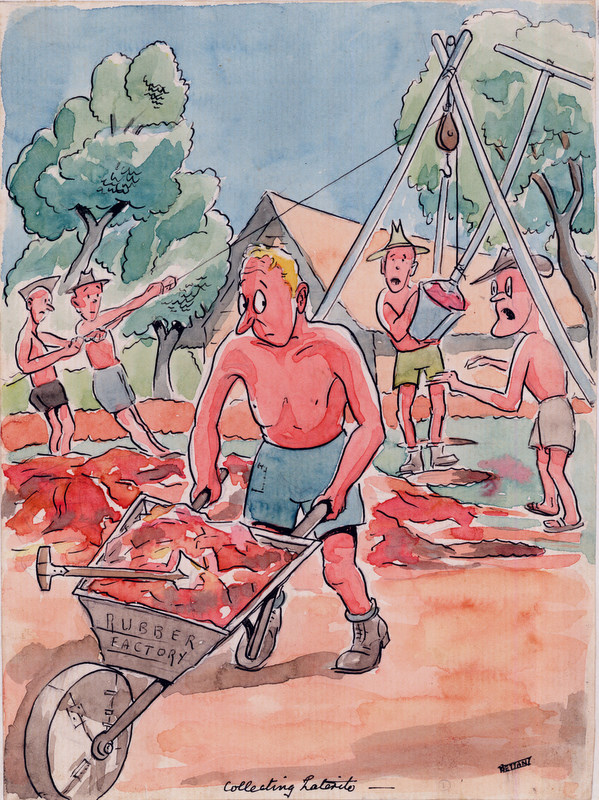Collecting Laterite Clay, An Additive To Produce Rubber
After 5 months of trial and error, laterite clay was found to be an important additive to latex to form rubber after other ‘products’ had been experimented with. The raw latex required and filer and coagulant and laterite clay was extremely suitable. The men were always on the lookout for new ‘long drop’ toilets being dug, as the best laterite clay was found 12 feet below the surface.
This image of Des Bettany’s artwork has been reproduced with permission from the book ‘Don’t Ever Again Say “It Can’t Be Done”’ published by The Changi Museum, Singapore.
‘In the early days of our prisoner of war career… a handful of volunteers got together with a view to repairing shoes … (it) later proved to be the birth of one of the most essential and useful installations in the camp: namely, the Rubber Factory.’
‘On the strength of these experiments it was decided to open a factory for the manufacture of these rubber soles. Tappers, to tap the rubber trees and bring the latex to the factory each morning, were trained. Mixers were trained to mix latex, laterite and cement in their exact quantities.’
Source: Robert Moffett, ‘Rubber Factory Report’, in Lachlan Grant (ed.), The Changi Book, Published by New South in association with the Australian War Memorial, 2015, pg. 200, 203

